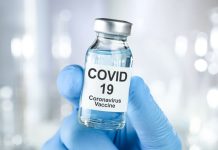BOSTON – New research shows that people with chronic low back pain (cLBP) have better results from yoga and physical therapy compared to reading evidence-based self-help materials. While this finding was consistent across many patient characteristics, a much larger effect was observed among those already taking pain medication to treat their condition and those who did not fear that exercise would make their back pain worse. Led by researchers at Boston Medical Center and published in Pain Medicine, the findings also showed that individuals who expected to do well with yoga were more likely to have a meaningful improvement in their function if they received yoga compared to receiving physical therapy.
Studying a population of predominately non-white and low-income patients, the results from this clinical trial show that overall, 39 percent of participants responded to one of the three treatment options with a greater response to yoga-or-physical therapy (42 percent) than the self-care group (23 percent). There was not a significant difference in proportion of people responding to yoga versus physical therapy – both showed similar improvements in back-related physical function. Among the study participants that were also using pain medication to treat chronic lower back pain, a large effect was observed among more participants in yoga (42 percent) or physical therapy (34 percent) compared with self-care (11 percent).
This study highlights the effect that fear can have on patient outcomes. Among the participants identified to have less fear around physical activity, 53 percent were more likely to respond to yoga and 42 percent were more likely to respond to physical therapy than self-care (13 percent). In contrast, among participants who started out with high fear avoidance around taking part in physical activity, the proportions of responders to the three treatment options showed no additional effect in response to treatment.
“Adults living with chronic low back pain could benefit from a multi-disciplinary approach to treatment including yoga or physical therapy, especially when they are already using pain medication,’ said Eric Roseen, DC, MSc, a chiropractic physician at Boston Medical Center.
The yoga intervention consisted of 12 group-based weekly 75-minute hatha yoga classes incorporating poses, relaxation and meditation exercises, yoga breathing and yoga philosophy. Thirty minutes of daily home practice was encouraged and supported with at-home yoga supplies. The physical therapy intervention consisted of 15 one-on-one 60-minute appointments over 12 weeks. During each appointment, the physical therapist utilized the Treatment-Based Classification Method and supervised aerobic exercise, while providing written instructions and supplies to continue exercises at home. The self-care intervention consisted of reading from a copy of The Back Pain Handbook, a comprehensive resource describing evidence-based self-management strategies for chronic lower back pain including stretching, strengthening, and the role of psychological and social factors. Participants received check-in calls regarding the reading every three weeks.
The study involved 299 participants with chronic lower back pain at a safety net hospital and seven federally qualified community health centers, across 12 weeks of treatment. An exploratory analysis was performed identifying patient-level characteristics that predicted large improvements in physical function and/or modified the effectiveness of yoga, physical therapy, or self-care. The characteristics that were studied as predictors of improvement or treatment effect modifiers were from the domains of sociodemographic, general health, back-related, psychological, and treatment expectations data.
“Focusing on a diverse population with an average income well below the US median, this research adds important data for an understudied and often underserved population,” said Roseen, also an assistant professor of family medicine at Boston University School of Medicine. “Our findings of predictors are consistent with existing research, also showing that lower socioeconomic status, multiple comorbidities, depression, and smoking are all associated with poor response to treatment.”
###
Funding for this study was supported by the National Center for Complementary and Integrative Health (1F32AT009272, 5R01AT005956), the Boston University Clinical and the Translational Science Institute Clinical Research Training Program (National Center for Advancing Translational Sciences, 1UL1TR001430).
About Boston Medical Center
Boston Medical Center is a private, not-for-profit, 514-bed, academic medical center that is the primary teaching affiliate of Boston University School of Medicine. It is the largest and busiest provider of trauma and emergency services in New England. Boston Medical Center offers specialized care for complex health problems and is a leading research institution, receiving more than $97 million in sponsored research funding in fiscal year 2018. It is the 15th largest funding recipient in the U.S. from the National Institutes of Health among independent hospitals. In 1997, BMC founded Boston Medical Center Health Plan, Inc., now one of the top ranked Medicaid MCOs in the country, as a non-profit managed care organization. Boston Medical Center and Boston University School of Medicine are partners in Boston HealthNet – 14 community health centers focused on providing exceptional health care to residents of Boston. For more information, please visit http://www.
TDnews















